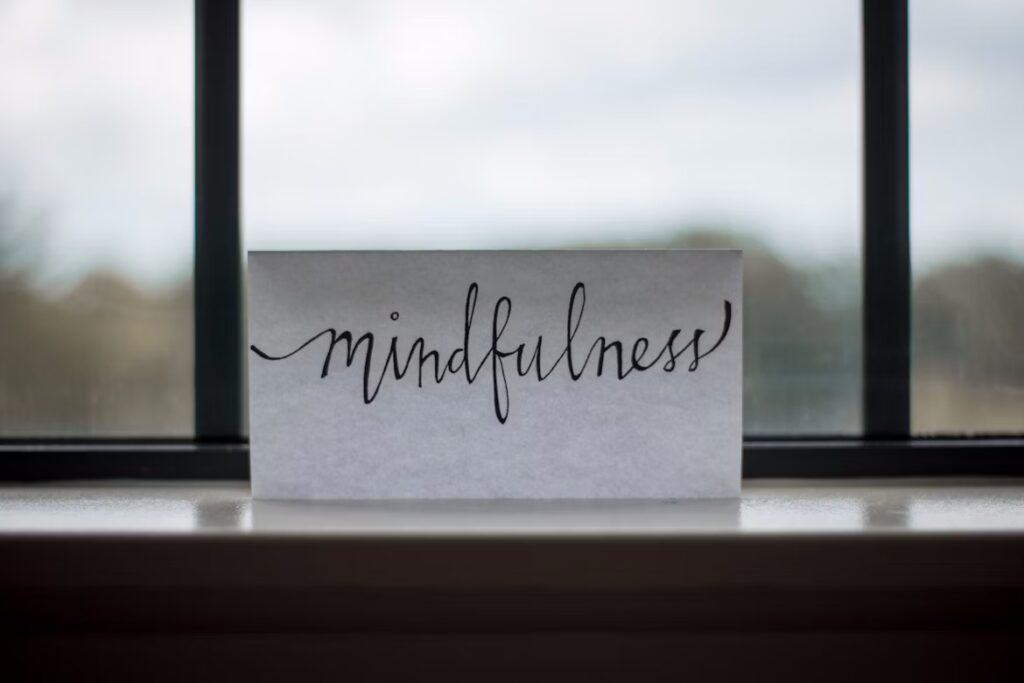Practicing Mindfulness at Work: Finding Calm in the Chaos
By Finlay Gilkinson – 02/09/2025
In today’s fast-paced work environment, stress can feel like an inevitable part of the job. Deadlines, meetings, and endless emails can pile up, leaving us overwhelmed. But what if there was a way to stay grounded, focused, and even enjoy the workday? That’s where mindfulness comes in—a simple yet powerful practice that can transform how we approach work.

Why Mindfulness Matters at Work
Workplace stress is real. Studies show that over 60% of employees report feeling stressed at work at least three days a week. Chronic stress can lead to burnout, reduced
Simple Ways to Practice Mindfulness at Work
You don’t need a yoga mat or a quiet corner office to practice mindfulness. Here are practical ways to weave it into your workday:
1. Start Your Day with Intention
Before diving into emails, take a minute to set an intention for the day. Ask yourself: What do I want to accomplish today? How do I want to feel? This small act helps you approach the day with purpose.
Try this: Take three deep breaths before opening your laptop. Focus on the air moving in and out, grounding yourself for the day ahead.
2. Practice Single-Tasking
Multitasking might feel productive, but it often scatters your attention. Instead, focus on one task at a time. When you’re writing a report, just write. When you’re in a meeting, listen fully.
Try this: Set a timer for 25 minutes (the Pomodoro technique) and work on one task without checking your phone or emails. Take a short break, then repeat.
3. Take Mindful Breaks
Step away from your desk for a moment to reset. A brief walk, a stretch, or even a moment to sip your coffee slowly can recharge you.
Try this: Do a one-minute body scan. Close your eyes, notice any tension in your body, and breathe into it. This can release stress you didn’t even realize you were holding.
4. Listen Actively
In meetings or conversations, practice being fully present. Instead of planning your response while someone’s talking, focus on their words and tone. This builds stronger connections and helps you understand others’ perspectives.
Try this: When a colleague speaks, nod or make eye contact to show you’re engaged. Summarize what they said before responding to ensure you’re on the same page.
5. Manage Stress in the Moment
When stress hits—maybe a tight deadline or a tough conversation—pause. Acknowledge the feeling without letting it take over. A few deep breaths can create space to respond thoughtfully instead of reacting impulsively.
Try this: Use the “STOP” technique: Stop what you’re doing, Take a breath, Observe your thoughts and feelings, Proceed with intention.
Making Mindfulness a Habit
Like any skill, mindfulness takes practice. Start small—try one or two of these techniques for a week and notice how you feel. You might keep a journal to track moments when you felt present versus distracted. Over time, these small habits can become second nature.
If your workplace offers wellness programs, see if they include mindfulness workshops or meditation sessions. Even a 10-minute guided meditation during lunch can make a difference.
The Bigger Picture
Mindfulness isn’t just about surviving the workday; it’s about thriving. By staying present, you can find moments of joy even in routine tasks, build better relationships with colleagues, and approach challenges with clarity. Plus, a mindful workplace often leads to a more positive culture, where everyone feels valued and heard.
So, next time you’re swamped with work, take a moment to pause, breathe, and reconnect with the present. It’s not about escaping the chaos—it’s about finding calm within it.
Conclusion
Practicing mindfulness at work doesn’t require sweeping changes—just small, intentional actions. By weaving these practices into your routine, you can cultivate a sense of calm, improve your focus, and create a more positive work experience
Try it today: take a deep breath, notice the moment, and begin.
Ready to find the perfect job?
Our team of experts work with an extensive network of employers. Submit your CV to ensure you’re a part of our network of talented candidates and we’ll make you aware of opportunities before they are even posted.
